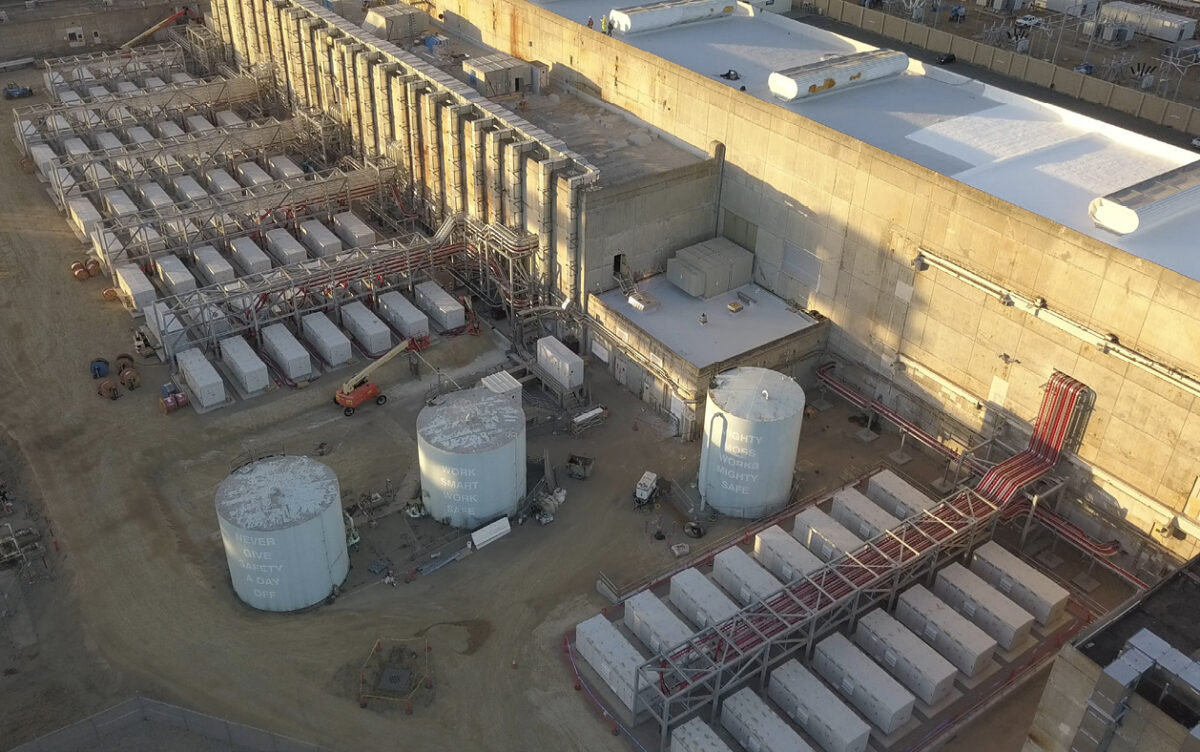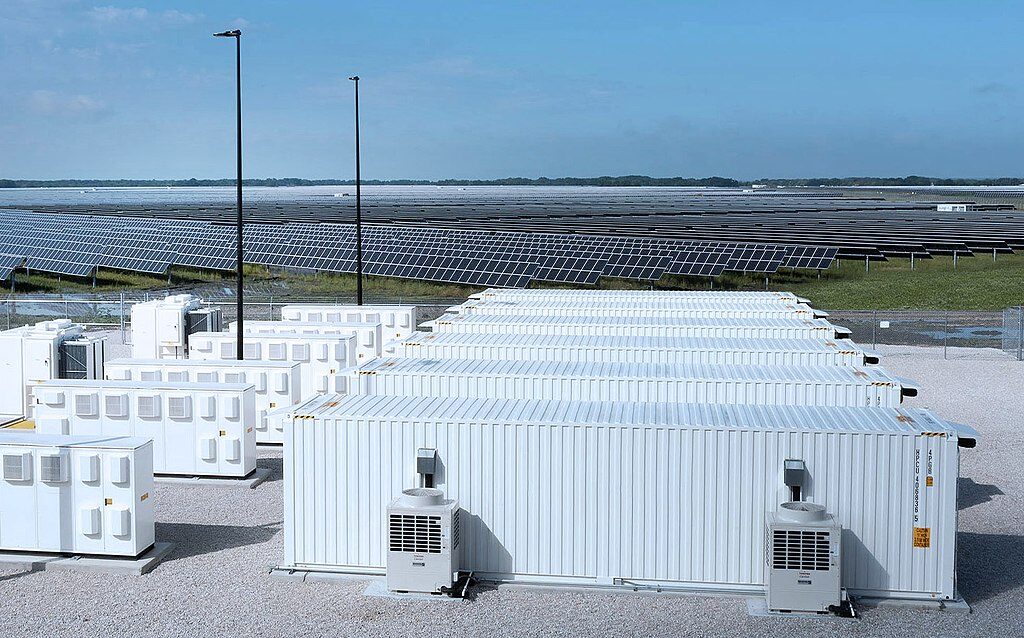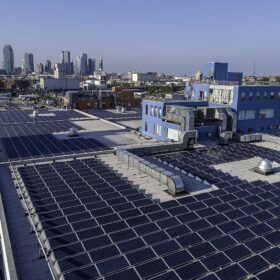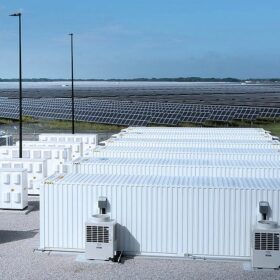From pv magazine 6/25 “The Hunt for High Efficiency”
At around 3 pm local time on Jan. 16, 2025, a fire broke out at the Moss Landing Energy Storage Facility in California. Three hours later, staff on site and local residents had to be evacuated as the fire spread.
Later reports stated that almost all of the project’s first phase, 300 MW/1,200 MWh of battery capacity was damaged in the fire. As of May 2025, the facility remains offline with cleanup operations ongoing. Though none were injured in the fire, an incident at such a high-profile project, among the world’s largest battery installations, presents a real setback for energy storage, and has since seen insurers and other stakeholders reevaluating their positions.
“Coming out of Moss Landing, we need to confirm what the root cause was, what contributed to it. And we need to know if there are factors specific to that fire that we can understand and utilize when we assess the risk at other battery locations,” said Isaac McLean, chief underwriting officer at insurance provider kWh Analytics.
McLean said that following the incident, some insurers may look to increase pricing or deductibles when policies for other battery projects renew, or reduce exposure by splitting coverage between carriers. Since the Moss Landing battery began construction around 2019, the industry has taken many steps forward in terms of battery safety, and insurers now know what to look for.
On the manufacturing side, a shift from nickel manganese cobalt (NMC) chemistries to lithium iron phosphate (LFP) for batteries to supply stationary storage projects was an important step. LFP batteries less frequently reach the thermal runaway state that is the first step toward a large-scale fire incident, though it is still a possibility. Other improvements have been seen at system level. “We see batteries being deployed today with integrated cooling between the cell racks, with different off gassing and CO2 detectors so that you can identify conditions that pose an increased risk. We’re seeing much more complicated but more resilient battery systems,” said McLean. He also noted the emergence of third-party battery analytics specialists able to closely monitor things like voltage, DC resistance, and temperature, that again may be able to prompt an early intervention before a fire starts.
McLean added that while these developments in battery safety are encouraging, they are not happening uniformly across all projects, and that industry standards still need to catch up. “There’s more that we can do, and it’s still challenging for carriers to figure out. Just because they have controls in place, we don’t always know what is present or adequate, or if it is being used in the correct way.”
Battery companies confirm that monitoring and heat dissipation are central to their safety features. “We’re designing safety into every level of the product,” said Jennifer Alfsen, senior fire test engineer at battery supplier Fluence. She explained that Fluence battery management systems include sensors inside the batteries monitoring temperature and other factors, that will immediately shut down a battery and isolate it from other systems when an anomaly is detected. And even if one cell fails and starts to heat up, thermal barriers between the cells prevent the heat from propagating further across the battery system.
Ensuring that industry standards develop along the right lines is another concern here. “Right now, the biggest risk factor in our industry is a fundamental misunderstanding of how a battery fire behaves. We’ve seen a lot of different jurisdictions requiring all-out fire suppression without understanding why, and that can lead to additional hazards,” said Alfsen.
She explained that a battery in thermal runaway is generating flammable gases and a lot of heat. A traditional fire suppression system is designed to extinguish flames, so it might appear to work temporarily, but if there is enough oxygen it will reignite, and potentially also create explosion conditions.
Risk mitigation
Fluence has carried out extensive testing of these features, and found that the ability to vent the gases produced by a battery in thermal runaway ranks among the most important. Alfsen pointed to recent additions from individual battery cells equipped with vent ports that will burst open to prevent gas buildup, to vents being added at module and unit level to prevent any gas produced from building up. And even though the gases could still ignite while being vented and start a fire, this is preferable to a gas buildup and eventual explosion.
Alongside new measures to prevent fires, there is growing acceptance that today’s batteries carry inherent risks. This has prompted efforts to minimize them through on-site measures that limit fire spread and ensure incidents can be quickly and safely managed.
“The industry is assuming there is going to be a burn rate. We don’t know exactly what it is, but it is relatively low. When we have a loss, we may assume we will lose one container, but you want to keep it from spreading to others,” said McLean.
Today, he said there are projects in operation where batteries and solar panels are spread out over different sections, so that if a fire breaks out it won’t spread to the whole site, and some parts may even be able to continue operating safely. “Those asset owners will see benefits in their insurance, because they’ve spread their risk and built in some redundancies,” he explained.
Fire testing
Alfsen pointed to limited use of large-scale fire testing as another safety issue, and stated that a full fire test is the only sure way to determine, for example, a safe distance to set battery containers apart and ensure that a fire or explosion in one will not spread to others.
Fluence has been conducting large-scale fire testing since 2022, and seen others begin to make better use of it in that time as well. Alfsen said that standards bodies are beginning to take note of this. For example, upcoming revisions to the US National Fire Protection Association’s 855 standard for the installation of stationary energy storage systems are expected to make testing in a large-scale, fully developed fire a requirement.
Alfsen sits on the technical committee for another widely used industry standard, the UL 9540A test method for evaluating thermal runaway fire propagation in battery energy storage systems, which she said is also in the process of drafting new requirements for large-scale fire test procedures. “Most manufacturers are doing a true large scale fire test. We have a lot of work to do as an industry to define how to do that. But we’ll work out those details. I’m just happy that people are doing it,” she said.
Deflagration (explosion) testing is another procedure lacking from current testing standards and industry practice. “I’m not seeing as many manufacturers doing the deflagration testing and that is extremely alarming, especially when we still have a lot of misconceptions about fire suppression systems,” continued Alfsen. This will likely be a hot topic in the coming years, and the next focus for standards bodies now working on fire tests.
Emergency response
Another factor in minimizing the risk of fires or explosions is for battery developers and owners to work closely with local authorities and first responders to be prepared for all possible outcomes. Alfsen noted that in the United States, this is already technically a requirement, but not always followed up on, while elsewhere in the world standards vary greatly.
There needs to be alignment between manufacturers, installers, site owners, and the local authority on all sides of how the system is designed, what the appropriate response is to any situation, and how to ensure that first responders can do their job safely if something does occur. “Those conversations should be happening during the planning stages of the project, not when it’s already been installed,” said Alfsen.
This content is protected by copyright and may not be reused. If you want to cooperate with us and would like to reuse some of our content, please contact: editors@pv-magazine.com.









By submitting this form you agree to pv magazine using your data for the purposes of publishing your comment.
Your personal data will only be disclosed or otherwise transmitted to third parties for the purposes of spam filtering or if this is necessary for technical maintenance of the website. Any other transfer to third parties will not take place unless this is justified on the basis of applicable data protection regulations or if pv magazine is legally obliged to do so.
You may revoke this consent at any time with effect for the future, in which case your personal data will be deleted immediately. Otherwise, your data will be deleted if pv magazine has processed your request or the purpose of data storage is fulfilled.
Further information on data privacy can be found in our Data Protection Policy.